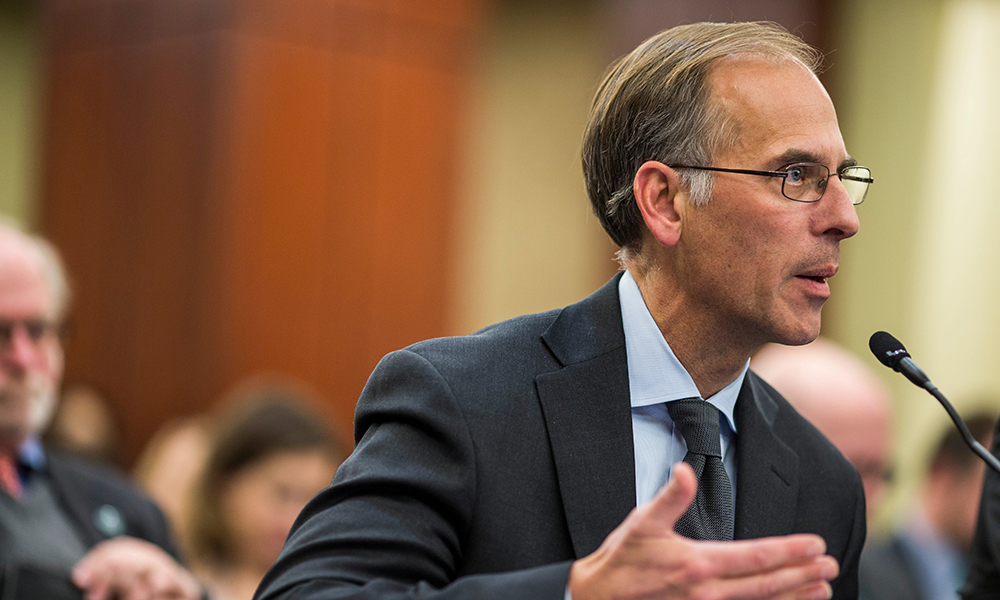
新冠疫情期间,美国人的储蓄达到历史最高水平,但通货膨胀开始削减美国人的储蓄,而且经济学家警告有些家庭可能受到更严重的冲击。不出意外,受影响最严重的是穷人。令人略感意外的是,他们只有很少的时间来应对这种状况。
新冠疫情期间,美国政府发放的纾困金和减少消费,让大多数美国人的储蓄在过去两年的大部分时间里超过了历史最高水平。据估计,尽管去年冬天通胀持续上涨,但到2022年年初,美国人的储蓄依旧高达2.7万亿美元。
然而,随着通胀率创40年新高,物价上涨开始影响消费者和他们的储蓄,而低收入家庭将更快花光储蓄。
研究机构穆迪分析(Moody’s Analytics)的首席经济学家马克·赞迪于本周对美国哥伦比亚广播公司(CBS)的《MoneyWatch》节目表示,如果通胀始终维持在当前的8.6%,低收入家庭的储蓄就只能维持大约六个月时间。
赞迪是穆迪的经济研究负责人,并被视为美国宏观经济和金融市场的意见领袖之一,他是最早预测2008年金融危机的经济学家之一,后来曾经担任美国政府顾问,为美国应对危机发挥了重要作用。他说:“人们每个月都变得更加拮据,但他们相当顺利地度过了危机。”他预测通货膨胀将达到最高点,之后会开始下降,这些预测经常被美国总统乔·拜登的政府引用。
美国政府的数据确实显示,与新冠疫情初期相比,美国民众正在更多地动用自己的储蓄。美联储(Federal Reserve)的数据显示,今年5月美国的个人储蓄率,即消费者的储蓄占可支配收入的比例,从2021年5月的12.4%下降到5.4%。
《华尔街日报》(Wall Street Journal)最先报道的穆迪对美国政府数据的分析显示,个人储蓄减少意味着家庭消费了约1140亿美元疫情时期的储蓄。
今年尽管通胀高企,但消费者支出持续增长,这表明许多美国人并不担心在不得已的情况下动用自己的储蓄。不过不止赞迪一位经济学家警告,美国人在新冠疫情期间积攒的大量储蓄可能很快花光。
今年6月,摩根大通(JPMorgan Chase)的首席执行官杰米·戴蒙估计,大多数美国人的银行账户的购买力只能维持6至9个月,之后许多人的储蓄将开始减少。
同样在6月,因为电影《大空头》(The Big Short)而出名的对冲基金投资者迈克尔·伯里在推特(Twitter)上写道:随着个人储蓄率较去年有所下降,大多数消费者可能会在“今年9月至12月期间”花光储蓄。之后他删除了这条推文。
如果美国人将在未来几个月内花光储蓄,低收入家庭就将首当其冲受到影响。《纽约时报》(New York Times)和Momentive在今年2月进行的一项调查发现,年收入不超过50000美元的低收入家庭只有9%认为他们在新冠疫情期间的储蓄较以前增加,相比之下,年收入超过100000美元的高收入家庭储蓄增加的比例达到31%。
赞迪向CBS表示,低收入家庭能否处理和维持他们在新冠疫情期间积攒的储蓄,将很大程度上取决于通胀的发展方向。
他说:“我们还有一点空间,希望通胀在未来几个月开始下降。到目前为止,这些储蓄一直是大多数家庭非常重要的财务缓冲,因此消费者应该继续守好自己的钱袋子。”(财富中文网)
译者:刘进龙
审校:汪皓
新冠疫情期间,美国人的储蓄达到历史最高水平,但通货膨胀开始削减美国人的储蓄,而且经济学家警告有些家庭可能受到更严重的冲击。不出意外,受影响最严重的是穷人。令人略感意外的是,他们只有很少的时间来应对这种状况。
新冠疫情期间,美国政府发放的纾困金和减少消费,让大多数美国人的储蓄在过去两年的大部分时间里超过了历史最高水平。据估计,尽管去年冬天通胀持续上涨,但到2022年年初,美国人的储蓄依旧高达2.7万亿美元。
然而,随着通胀率创40年新高,物价上涨开始影响消费者和他们的储蓄,而低收入家庭将更快花光储蓄。
研究机构穆迪分析(Moody’s Analytics)的首席经济学家马克·赞迪于本周对美国哥伦比亚广播公司(CBS)的《MoneyWatch》节目表示,如果通胀始终维持在当前的8.6%,低收入家庭的储蓄就只能维持大约六个月时间。
赞迪是穆迪的经济研究负责人,并被视为美国宏观经济和金融市场的意见领袖之一,他是最早预测2008年金融危机的经济学家之一,后来曾经担任美国政府顾问,为美国应对危机发挥了重要作用。他说:“人们每个月都变得更加拮据,但他们相当顺利地度过了危机。”他预测通货膨胀将达到最高点,之后会开始下降,这些预测经常被美国总统乔·拜登的政府引用。
美国政府的数据确实显示,与新冠疫情初期相比,美国民众正在更多地动用自己的储蓄。美联储(Federal Reserve)的数据显示,今年5月美国的个人储蓄率,即消费者的储蓄占可支配收入的比例,从2021年5月的12.4%下降到5.4%。
《华尔街日报》(Wall Street Journal)最先报道的穆迪对美国政府数据的分析显示,个人储蓄减少意味着家庭消费了约1140亿美元疫情时期的储蓄。
今年尽管通胀高企,但消费者支出持续增长,这表明许多美国人并不担心在不得已的情况下动用自己的储蓄。不过不止赞迪一位经济学家警告,美国人在新冠疫情期间积攒的大量储蓄可能很快花光。
今年6月,摩根大通(JPMorgan Chase)的首席执行官杰米·戴蒙估计,大多数美国人的银行账户的购买力只能维持6至9个月,之后许多人的储蓄将开始减少。
同样在6月,因为电影《大空头》(The Big Short)而出名的对冲基金投资者迈克尔·伯里在推特(Twitter)上写道:随着个人储蓄率较去年有所下降,大多数消费者可能会在“今年9月至12月期间”花光储蓄。之后他删除了这条推文。
如果美国人将在未来几个月内花光储蓄,低收入家庭就将首当其冲受到影响。《纽约时报》(New York Times)和Momentive在今年2月进行的一项调查发现,年收入不超过50000美元的低收入家庭只有9%认为他们在新冠疫情期间的储蓄较以前增加,相比之下,年收入超过100000美元的高收入家庭储蓄增加的比例达到31%。
赞迪向CBS表示,低收入家庭能否处理和维持他们在新冠疫情期间积攒的储蓄,将很大程度上取决于通胀的发展方向。
他说:“我们还有一点空间,希望通胀在未来几个月开始下降。到目前为止,这些储蓄一直是大多数家庭非常重要的财务缓冲,因此消费者应该继续守好自己的钱袋子。”(财富中文网)
译者:刘进龙
审校:汪皓
Inflation is starting to chip away at Americans’ historic pandemic-era savings, and economists warn that some households are set to be harder hit than others. It’s no surprise who’s hurting the most: the poor. What may be a surprise is just how little time they have.
Stimulus checks and reduced spending during the pandemic led to most Americans saving up well above the historical norm for most of the past two years. By some estimates, Americans saved up as much as $2.7 trillion by the start of 2022, despite rising inflation last winter.
But with inflation now sitting at a fresh 40-year high, rising prices are starting to catch up with consumers and their savings, with low-income households having to reach even deeper into their piggybanks.
If inflation stays where it is now, 8.6% at its last reading, low-income households have roughly six months before they will start seeing savings dry up, Mark Zandi, chief economist at research firm Moody’s Analytics, told CBS MoneyWatch this week.
“With each passing month things are getting tighter and tighter, but they have managed through reasonably well,” said Zandi, who leads economics research at Moody’s and is considered a leading voice in U.S. macroeconomics and financial markets, having been one of the first economists to foresee the 2008 financial crash, before playing a pivotal role in advising the federal government’s response to the crisis. His predictions that inflation would peak before coming down again have been consistently cited by the Joe Biden administration.
Government data does indeed suggest that Americans are dipping more into their savings than in the earlier days of the pandemic. The U.S. personal savings rate—the percentage of disposable income that consumers save—hit 5.4% in May, according to Federal Reserve data, down from 12.4% in May 2021.
The drop in personal savings has translated to households spending around $114 billion of their pandemic-era savings, according to an analysis of government data by Moody’s initially reported by the Wall Street Journal.
Consumer spending has continued to grow despite rising inflation this year, meaning that many Americans are unafraid to dip into their savings if they have to. But Zandi is not the only economist warning that large pandemic-era savings could run out soon.
Last month, JPMorgan Chase CEO Jamie Dimon estimated that most Americans have between six to nine months’ worth of spending power left in their bank accounts before many will see their savings begin to dwindle.
Also in June, one of the hedge fund investors famous from The Big Short, Michael Burry, wrote in a since-deleted tweet that, given the drop in personal savings rates over the past year, most consumers could expect to run out of savings “between September and December this year.”
And if savings begin to run dry within the next several months, low-income households are likely to be the first hit. A February poll by the New York Times and Momentive found that only 9% of low-income households earning less than $50,000 a year thought they had saved more during the pandemic than before it, compared with 31% of high-income households earning more than $100,000.
Low-income households’ ability to cope and maintain what savings they were able to build during the pandemic will largely depend on what direction inflation takes, Zandi said to CBS.
“We’ve got a little bit of room here, and hopefully inflation starts to come in, in the next few months. So far, these savings have been a very important financial cushion for most households, and that’s why consumers have continued to do their part,” he said.






